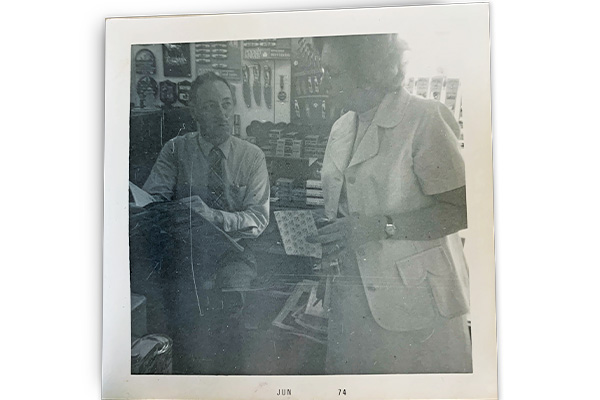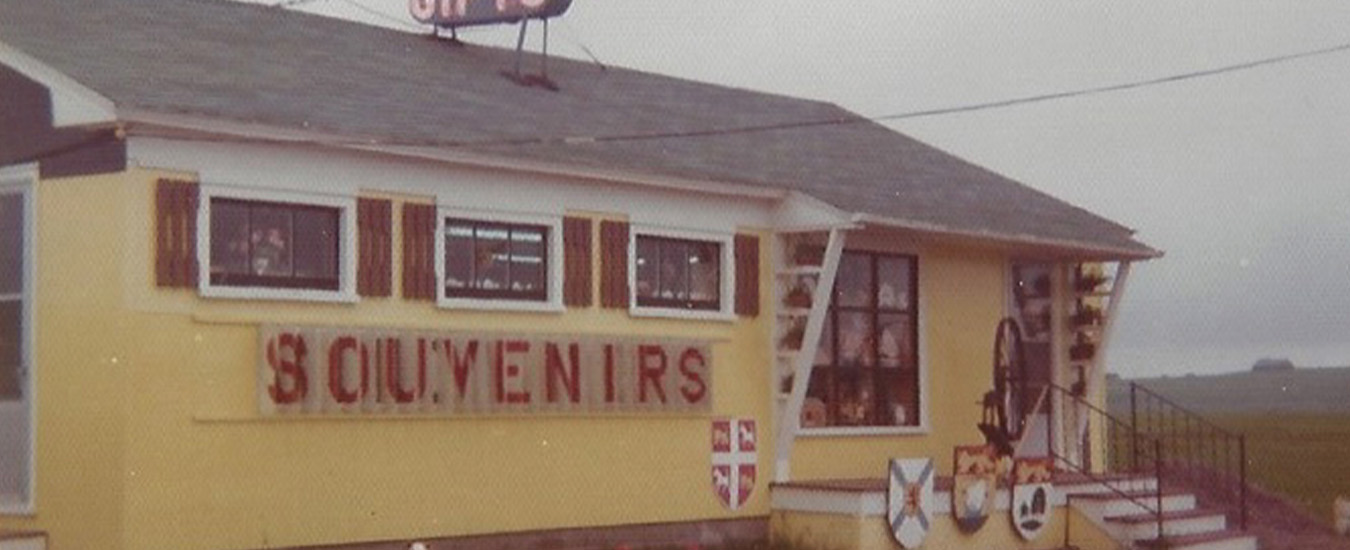Memories of the Windy Mere family gift shop on the Tantramar
There’s a site along the old Trans Canada highway on the Tantramar Marsh between Aulac, New Brunswick and the entrance to Nova Scotia that, should you venture down this old, dead-end stretch of road, might make you stop and ponder. You might wonder why there’s a decaying asphalt parking lot, so out of place, beside the road. If you look at the back of the parking lot, you’ll make out the remains of a foundation. Just a few crumbling concrete blocks remain. Tall trees and shrubs grow within what had been the walls. Not much remains nowadays.
Still, as you might guess, this old site has a story to tell.
From the mid-1960s through the early-1980s, this was the home of the Windy Mere Gift Shop, so named as it reminded the original owner of the scenery around Lake Windermere in the Lake District of England. It sat by itself on this small, dry rise of the marsh, the nearest neighbour a service station a half mile away. The building was painted pale yellow with brown trim and had wooden cutouts of its name and of Canada geese on the west end.
Early beginnings
The shop began under the ownership of Ms. Rosamond Pipes of Nappan, NS. In the early 1970s, she mentioned to my mother that she was ready to sell the shop and my mother decided to take a look. What she saw caught her fancy. Both parents must have been ready for a major life change—shortly after, they each left their places of steady employment and purchased the shop.
The early days at the shop were relaxing. As their daughter and only employee, I remember that we’d all sit in lawn chairs in front of the shop, enjoying a cup of tea and waving at the passing tourists. We’d go on leisurely walks “up the marsh” with our dog, leaving just one person on duty.
It couldn’t have been long before my parents realized that this attitude toward being shop owners was not going to provide a living, and their approach to operating a successful business became much more serious.

Cora’s parents, Gerald and Catherine McKay, discussing orders for the shop. Image Submitted.
When Ms Pipes owned it, the shop was known as a showplace for the handwork of Maritime crafters. My parents wanted to expand the range of local crafts and they worked to build relationships with local artisans.
Some of the popular crafts—such as tatting and finely embroidered placemats and guest towels—are nearly lost to time now. Woodworking was a favourite and local woods were used to turn serving bowls or carve replicas of sailing ships. Mi’kmaq artisans would stop in with crafts they’d prepared for the shop, and beachcombers brought glass buoys and even lobster pots they’d found abandoned on shorelines.
We were amazed by the many ingenious ways travellers came up with when tying a lobster pot to the roof of their cars to carry home as souvenirs.
Bone china was popular back then—before people all switched to dishwasher-friendly but less gracious dinnerware—and many shelves were filled with cups, saucers and serving plates in the tartan patterns of the Atlantic Provinces. These breakables arrived from the merchants packed in environmentally-friendly straw, which presented quite the clean-up challenge when unpacking.
Kilts and tams with matching scarves, and soft, woolen car blankets rounded out the display of provincial and clan tartan items.
There was a book section for those who wanted to learn about the history of the region. Regional cookbooks, whether published professionally or as local fundraisers, were favourites. Out of Old Nova Scotia Kitchens by Marie Nightingale [Saltscapes’ founding food editor] topped the list. There were three large jewellery cases featuring necklaces and rings made from amethyst and agates. At the checkout desk, we tempted travellers with attractive tins of Scottish shortbread.
Enticing tourists
With this wide range of merchandise, my parents now faced the task of enticing passing tourists to take notice of their little shop and pull in off the highway. They knew that by this point in their journey, most travellers had the New Brunswick/Nova Scotia border within their sights, along with its well-advertised, huge gift shop. They decided the best way to attract attention to their shop was to promote their shop far and wide, making it a much-anticipated destination. Many times, people entered the shop, took a look around, and said they’d read so much about the shop along their way that they were expecting a huge store. A welcome greeting and the attractive displays encouraged them to stay a while and shop.
To spread the name of their shop, my father became a printer. This little sentence sounds simple enough, but what it encompassed was expanding the family home, basement and all, and turning the new lower level into his print shop. He fashioned a pulley system and lowered a one-ton printing press into the building. He had other machines for early colour printing, drawers of print type and, well, a fully functioning print shop. Upstairs, along with expanding the living space of their house, he built a darkroom for his black and white photography. He was set to produce the promotional material they needed.
One of my parents’ most successful forms of advertising was a brochure they designed and printed and sent to tourist information centres for hundreds of miles around. Along with a neatly wrapped stack of brochures, they included a card, thanking the centre staff for distributing their brochures, and a pen printed with the shop’s name and logo. Before visitors left, they were offered a “mileage card” that promoted the shop on one side and on the other, listed mileages from the shop to popular destinations. Getting these cards into customers’ hands helped ensure they remembered their visit.
End of an era
Years went by and all was going well. However, a sign that a change was coming took place one afternoon when my parents noticed a survey crew along the highway in front of their shop. They went out to speak with the crew and were told that within a few years, that section of the highway was going to be straightened and there would no longer be easy access from the highway to their shop.
This was an incredible heartbreak. Years of hard work had gone into developing their successful business and now it was coming to an end. My parents ran Windy Mere for a couple more years before selling it to another owner, who kept it open until the new highway was complete. The building was stripped of its insignia, provincial crests and the wooden spinning wheel that had weathered the years outside on the front deck. The building was sold and moved. It now serves as a private garage in the area.
I visit the old site on occasion. Just standing there brings back memories of so many good times together. We worked hard, laughed, welcomed tourists, and listened to their stories. Some even stopped in as they were on their way home to tell us about their adventures. Throughout its years, this little shop on the marsh served as a welcoming destination and as an ambassador to travellers visiting the Atlantic Provinces.
